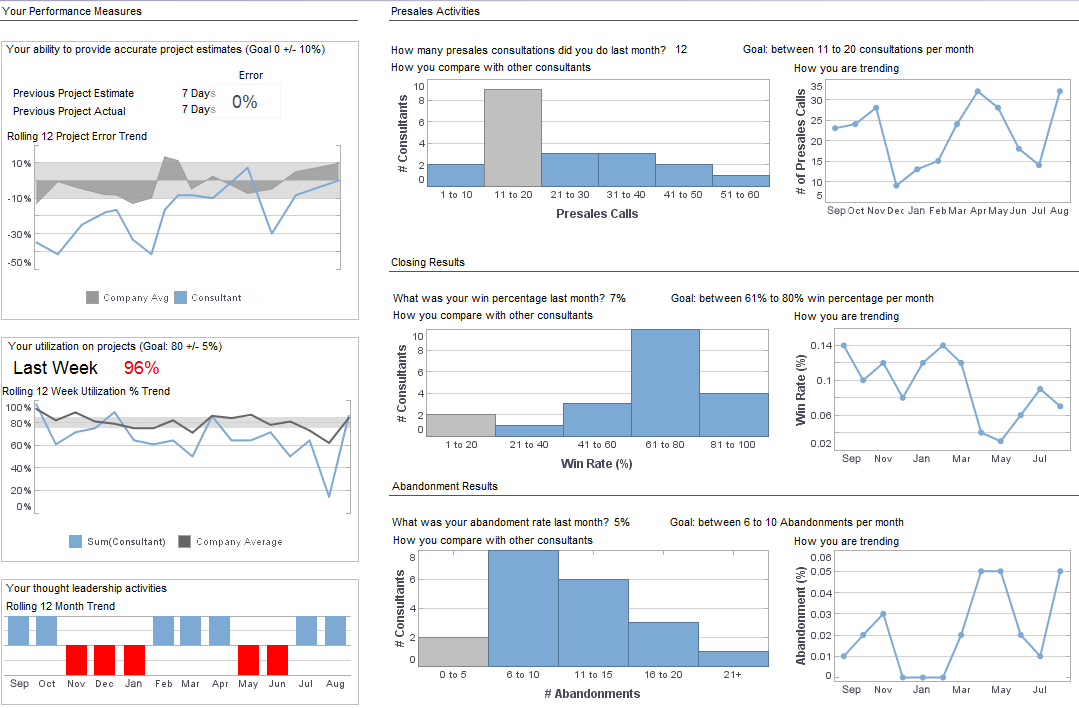Dive into Business Intelligence Reporting and Analysis
This is the continuation of the transcript of a podcast hosted by InetSoft on the topic of "The Difference Between Production Reporting and Business Intelligence Systems." The speaker is Mark Flaherty, CMO at InetSoft.
So now we’re going to dive into business intelligence reporting and analysis, monitoring and prediction. Back in the 70s and 80s, all BI was low business value and fairly low complexity, but over time we’ve added other capabilities, so now that business intelligence can provide significant business value.
We can put monitoring analysis and reporting into a single solution, and we call it performance dashboarding. This is not just a flat display of what’s performing well and what’s not. It’s a multi layered delivery system that really is the new face of BI. An offshoot of a performance dashboard is predictive analytics. These are the more advanced analytical models and visualization techniques that provide exceptional value.
Another area is the planning system. You use the results of your analysis either through your dashboard or your analytical tools to create your plan, your budgets, your models, and your forecasts.
 |
View a 2-minute demonstration of InetSoft's easy, agile, and robust BI software. |
Monitoring Layer of a Dashboard
In those plans you’re going to set goals, targets and thresholds and those get pushed into your monitoring layer of your dashboard which allows you to monitor your progress towards achieving strategic objectives, executing strategies. This is called scorecard reporting.
And I think what we’re seeing is you have multiple roles or functional areas and each of those groups is doing all the pieces that we just talked about. We often think of it as just a finance process, that will finance the budget, and they plan. Every organization we’re working with, they’re planning on the marketing side, whether that’s figuring out how to best use their marketing budget, whether it’s on the supply and logistics side, they’re planning on what they expect demand to be, how much operational bandwidth do they need to have in place to meet that demand etc.
The challenge we see is that usually not many of these systems and tools are integrated, and even as customers start to move to next generation systems, as you mentioned where the business intelligence vendors are starting to make the application integration easier, the data that’s driving them is often not integrated and creates a lot of problems.
So even if you have the best BI tools to play with in the world, if you don’t have the underlying data foundation cleaned up first, you’re going to end up having a lot more work and effort, and you’re going to end up an army of analysts with Excel spreadsheets. They’ll end up, maybe not using Excel spreadsheets, but still being data jockeys, trying to link together the way things are done in the planning process and marketing the way things are being done with the planning process and finance and see if they’re still calling revenue or new customers the same thing.
 |
Read how InetSoft was rated as a top BI vendor in G2 Crowd's user survey-based index. |
Get the Data Infrastructure Right
One of the things that we see from our customers is that if they get that data infrastructure right then that makes it much easier to integrate the whole performance management application infrastructure and makes it much easier and faster to deploy as well as reduces significant cost. And getting the data management right doesn’t necessarily mean data warehousing. Our data mashup technology provides an alternative, more like data virtualization, that allows the BI reporting interface to access data from many different sources at once.
We’ve been talking about performance management. This is just a conceptual view of performance management, which is all about the execution of business strategy. From my perspective, performance management has four steps. The first two are all about creating the strategy, the strategy being a mission, values, goals, objectives, incentives and KPIs to measure those things.
And then you obviously want to execute the strategy so you have to go to market plan. You have to budget the plan, you have to make forecast and targets that you want to hit every month to achieve the goals. Step three is monitor and analyze. Use performance dashboards and scorecards. Track your progress. Drill down into details to get to the root cause of a problem. If you see a problem, then you want to act on it, make adjustments, perhaps change your plans, change your forecast, engage in discussions with your colleagues etc. And all this revolves around having an integrated set of consistent data.
| Previous: The Difference Between Production Reporting and Business Intelligence Systems |
